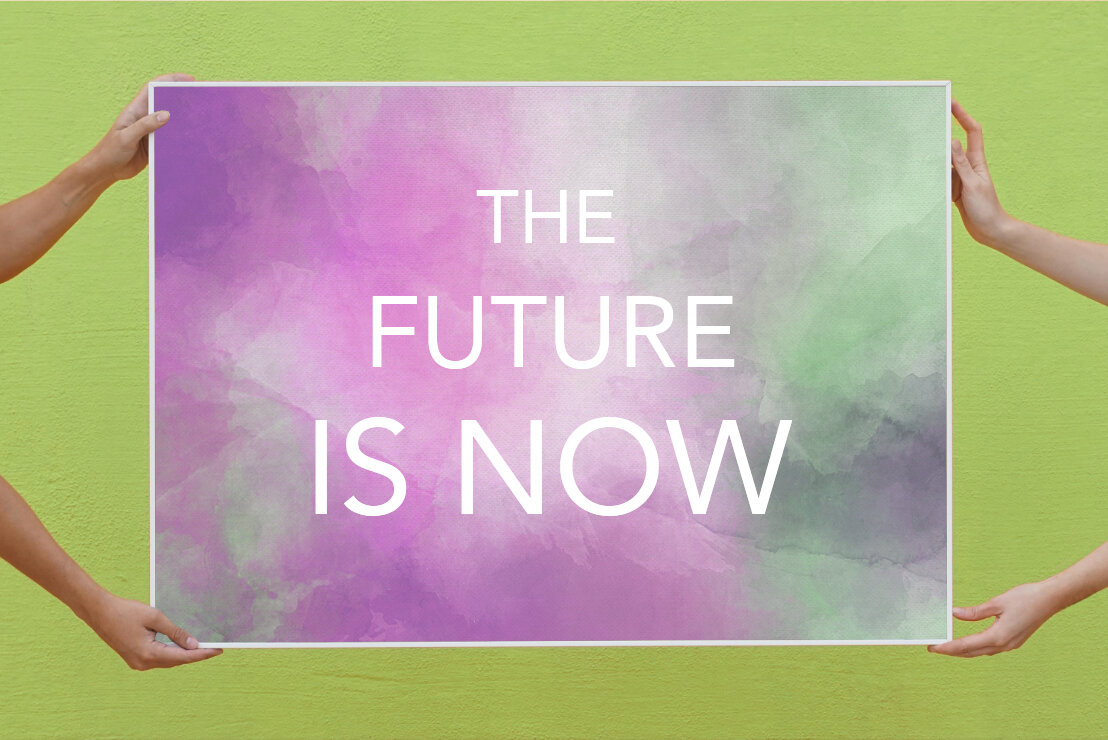For Museums & Their Audiences, The Future is Now
By Jo Ann Secor – Principal, Director of Interpretive Services
and Katie Ahern – Senior Manager, Content and Visitor Experience Design
Change is a constant in our lives. However, the degree to which we have had to rapidly change in response to COVID-19 is unprecedented. As we adapt to an ever-changing definition of new normal and seek to regain balance and regularity within this strange and surreal time, let us embrace what is also inherent in change – new opportunities, new ways of thinking, and new beginnings. At this time when the notion of the future is uncertain, change compels us to realize that THE FUTURE IS NOW.
#MuseumFromHome
As our Manhattan-based studio, SKOLNICK, is adapting to a new normal of virtual meetings with colleagues and clients from our home studios, some of us have been pondering the question, “How, during the COVID-19 pandemic, can museums continue to connect, communicate, and create with their communities?”
Museums have been lightning-quick to respond with #MuseumFromHome and an abundance of digital offerings to stay connected with the people who comprise the impressive number of 850 million visits annually here in the United States. Rita Braver recently featured some of these on the CBS Sunday Morning segment, “Visiting Museums Online” and additional examples and resources for engaging visitors and responding to COVID-19 can be found on Colleen Dilenschneider’s informative website and weekly updates, CUSEUM’s webinar series, and AAM’s Future of Museums Blog. All these sites highlight an impressive selection of the creative approaches being employed by museums as they seek to offer comfort, humor, education, and a sense of community, resuming their role and in some cases becoming a vital part of people’s lives.
New Beginnings
What we find most exciting about the creative ways in which museums are repositioning themselves online right now to maintain relevancy with the public and sustain audience engagement is that they are actively inventing their future now. Just as many of us find ourselves in this moment reflecting, dreaming, hoping, and contemplating aspirations within our own personal and professional lives, what if museums also seized this moment to internally reflect and ask… what really matters most to us in the immediate now, the near future, and the future beyond? This question can feel like you’re embarking on a new beginning. What energizes our studio about new beginnings is that they are a golden opportunity for an abundance of thoughts – a cornucopia of ideas – to be put forth that can be mined for future planning.
Master Planning
SKOLNICK begins our architecture and exhibit design projects by collecting this cornucopia of ideas from a diversity of voices to inform the development of an Interpretive Master Plan (IMP).
Children’s Gallery at the Royal Alberta Museum: Concept Diagram (top left); Early Floor Plan (top right); Finished Space (bottom)
As we constructively discuss and develop these initial thoughts, we find that the most buoyant – those that are fresh, exciting, and relevant – rise to the surface. We build upon these to define goals and objectives, outline potential visitor experiences, and formulate a functional work plan. This process of moving from broad conceptual thinking to outlining a tangible reality results in an IMP that serves as a future-oriented, forward-thinking road map for your organization.
The Future Is Now
What might this planning process look like in this moment when we are all sheltered at home? There is an opportunity right now for museums not only to connect and communicate with their communities but also to create the future together. Imagine the possibility of virtual dialogues, ideation sessions, and town halls with staff, stakeholders, and museum members. With museums shuttered, now could be an optimal moment to virtually connect with your internal team, board members, and key stakeholders to freely share ideas, examine the current challenges facing your museum, and collectively discuss your hopes and aspirations.
This far-reaching dialogue has the potential to engage the community as well. What if visitors – individuals, family groups, and groups of friends – were invited to participate in these discussions and share their own ideas, diagrams, and sketches of their hopes for the museum? What if they were asked – What do you miss about the museum? What are some of your fondest memories? What are you seeking from the museum now? What are your expectations and desires for the museum in the future? How could they align with your own future aspirations?
How might the current surge of social media interactions and virtual gatherings promote an even greater degree of democratic engagement that encourages truly free and nimble thinking? This may result in an explosion of very different ideas, but again, this cornucopia of ideas is the goal! By capitalizing on this moment to listen and gather, you will have begun the process of master planning. Through further discussion and development, the most salient, relevant, and exciting ideas will filter to the top. The fruits of these exercises can then lead to an action plan that embodies the many voices and values of your organization – one that can prove extremely appealing to all who helped shape it, including stakeholders, the general public at large, and funders and supporters.
Now is the time to reflect on a responsive museum experience that is both human and relatable; to analyze and harness your current successes; and engage with your community to gather fresh, new ways of thinking. Together they can become the foundation for your future, for THE FUTURE IS NOW.


